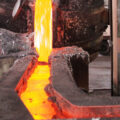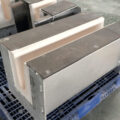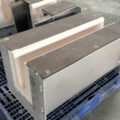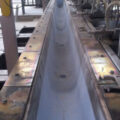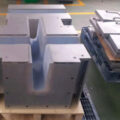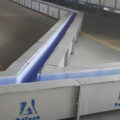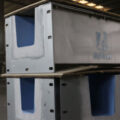Molten Aluminum Transfer is an important step in aluminum casting. The method of molten aluminum transfer in aluminum alloy smelting production is also a factor that affects the quality of the melt. Under industrial production conditions, the following test results have been obtained:
(1) Transfer of ladle to injection. First, the aluminum alloy melt melted in the flame furnace is poured into the ladle, and then poured into the receiving funnel of the resistance reverberatory furnace, and then into the molten pool. The increased rate of alumina content before and after the aluminum alloy was measured was 52%.
(2) Flow slot transfer. The melt is drawn from the drainage trough of the resistance reverberatory furnace, and then injected into the molten pool of the static furnace through the guide vertical pipe. The increased rate of alumina content before and after the aluminum alloy transfer was determined to be 8.7%.
When using a tilting crucible to transfer aluminum water, in order to avoid the mixing of aluminum, place the ladle as close as possible to obliquely make the aluminum water flow down along the sidewall of the ladle, so as not to directly impact the bottom of the ladle, causing agitation and splashing. The launder injection method is better because the process produces fewer impurities. AdTech offers the high-performance Launder System for molten aluminum transfer.
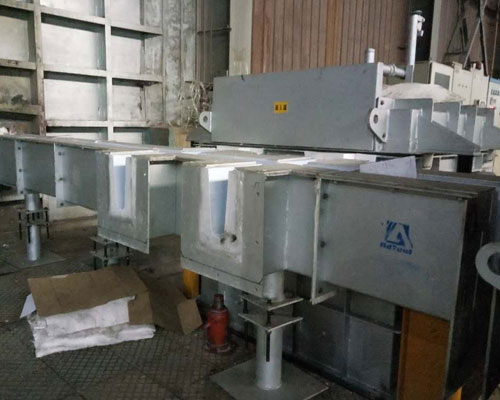
When transferring molten aluminum, the key is to minimize mixing and minimize the contact between molten aluminum and air. Although the density of solid alumina is similar to that of molten aluminum, it takes a long enough time to reach the bottom of the crucible after entering the molten aluminum. However, the oxide film formed after the aluminum water is oxidized has only a large number of loose diameter pores that are in dense contact with the aluminum water. The surface area is large, and the adsorption tends to float upward. Therefore, the specific gravity difference between this oxide film and the aluminum water is small. When it is mixed into the melt, the floating and sinking speed is very slow, and it is difficult to remove from the aluminum water, forming pores and inclusions in the casting.


